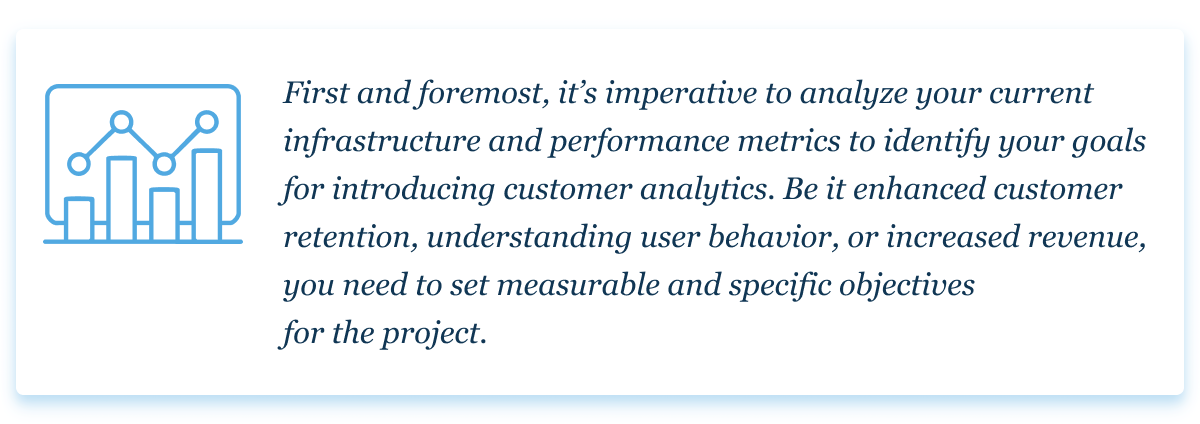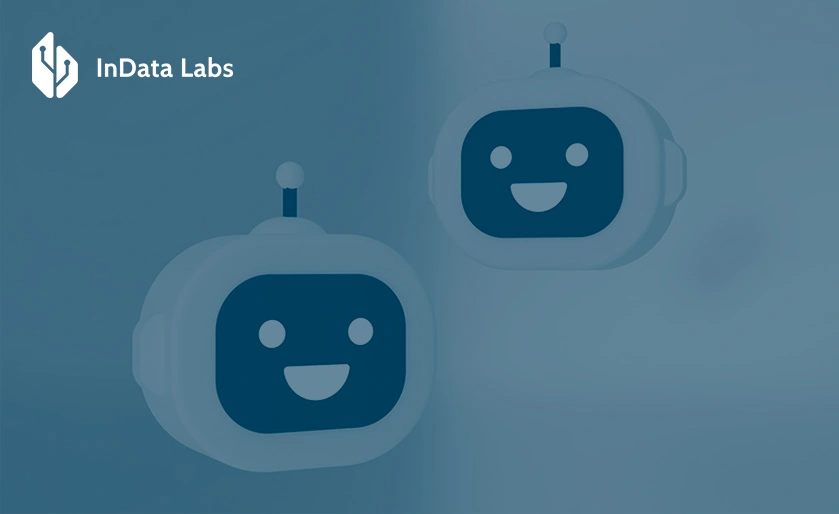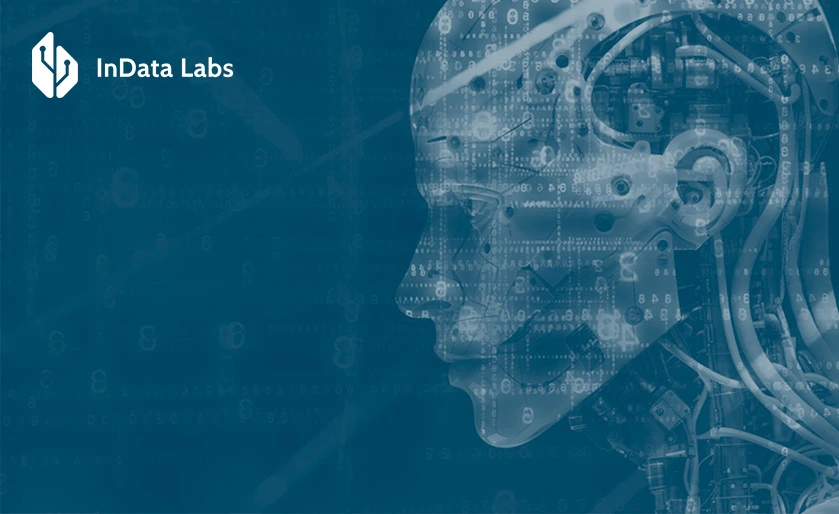Lack of business predictability is seen as the top reason for failing customer experience strategies. How to combat the discord in your data sets and find order in chaos? Leveraging AI and customer analytics helps companies take control of their data and discover new insights about their customer base. By collecting and analyzing customer reviews, purchasing history, and interactions, you can learn about their needs, desires, and concerns and gain a competitive advantage.
In this article, we will explore AI customer analytics solutions, pinpoint the benefits you can derive from predictive analytics services, and go through a comprehensive guide to adopting the technology.
What is customer analytics?
Let’s begin with the most eminent question: what is customer analytics? A process of unlocking vital insights from numerous datasets, customer analytics leverages AI-driven technologies to analyze customer data. By employing natural language processing and machine learning, AI in customer analytics can process large data volumes and identify hidden patterns.

Source: Unsplash
Traditionally, customer data is pulled from reviews, surveys, emails, and customer support tickets. Although exceptionally helpful in gauging the company’s perception, this data is insufficient to fully grasp how customers feel about your services. That’s where tools like sentiment and intent analyses come into play.
Not only can you learn what your clients dislike about your products, but also identify commonalities and make accurate predictions. For example, harnessing predictive analytics in retail allows companies to forecast emerging trends and create new products that meet the ever-changing customer needs.
Components of customer analytics technologies
To understand how AI customer analytics works, we need to look behind the technology. The solution is based on two main tools: Natural Language Processing (NLP) and Machine Learning (ML).
Natural language processing
NLP is a mediator between computational understanding and natural human communication. A machine learning technology, NLP is what allows computer systems to comprehend and interpret human language.
It starts by preprocessing the input text to remove unimportant words and simplify the further analysis. Then, the system converts raw text into a numerical language that is understandable to machines and extracts valuable information through different techniques. Thanks to
NLP, we have access to:
Sentiment analytics
Sentiment analytics is the process of analyzing vast amounts of information to pinpoint its emotional charge. Also called opinion mining, sentiment analysis is used to process data pulled from various sources containing customer reviews, discussions, complaints, and more to determine how they feel about the product or service. While more and more consumers publish their opinions on various products online, companies can leverage sentiment analytics to gain real-time insights.

Source: Unsplash
Topic analytics
Topic analytics is a type of customer analytics software that helps researchers group large volumes of data into several themes or topics. This technology allows us to identify the main topics of conversation and track their development.
Using real-time data analytics, you can not only learn what your customers think about your brand but also monitor the changes in perception. The topic analysis aids companies in discovering common issues customers experience, making improvements based on feedback, and observing the reactions to the updated services in real time.
Intent recognition
Intent recognition is what helps us understand the intent behind the person’s message or action. Using NLP, such systems can recognize when a customer wants to make a purchase, file a complaint, receive assistance, or find more information on the topic. Additionally, intent recognition can gauge the urgency of the request allowing businesses to prioritize their tasks. These tools can also calculate the next action the user might take and promptly offer their support.
Named entity recognition
Named Entity Recognition, also known as entity extraction, is a technique that identifies key elements to group them into different categories. Unlike topic analysis which discovers general themes, entity recognition works at a more granular level. It finds specific entities and labels them to turn unstructured data into structured information. This mechanism can identify and tag major customer concerns in the customer analytics context.

Source: Unsplash
Machine learning
A subset of artificial intelligence, machine learning utilizes data and algorithms to help AI systems identify patterns in vast volumes of information and make predictions. Essentially, ML is what enables AI to mimic the way we learn and apply these findings to enhance the accuracy of its predictive capabilities. Machine learning developments helped us build the following systems:
Predictive analytics
Predictive customer analytics delivers forecasts based on historical data fed to the machine. From predicting the next action a customer is likely to take to major forecasts about the company’s financial future, predictive analytics can improve strategic thinking. Through various methods, including regression analysis or data mining, ML algorithms can add predictability to at times, chaotic and unstable markets.
Customer segmentation
Customer segmentation refers to the process of grouping the entire customer base into segments. Based on demographical data and customer behavior patterns, ML algorithms can build different user personas.
By relying on multiple data types, including spending amounts, purchase history, location, etc., you can identify distinct groups. Companies then leverage these insights to build target or user personas and reach out to their clients more personally and efficiently.
Recommendation systems
Recommendation systems refer to personalized suggestions for products and services that customers are likely to be interested in. Based on implicit feedback like purchasing history and explicit feedback that includes reviews and ratings, AI-powered systems can confidently determine which items are relevant for which user. Tailored recommendations can help you increase user experience and boost sales revenue.

Source: Unsplash
Anomaly detection
Anomaly detection is another ML algorithm designed to identify outliers in large datasets. For customer analytics, AI enables companies to spot unusual behavior and identify misrepresentations.
For example, if data was processed incorrectly or was of bad quality to begin with, anomaly detection can aid you in remedying these mistakes. Additionally, this function is essential in cybersecurity practices allowing systems to detect potentially fraudulent activities.
How customer analytics work
Working in conjunction, NLP and ML lay the foundation for advanced customer AI analytics. While NLP is in charge of data collection and processing as well as key extraction and intent analysis, ML finds patterns, makes predictions, makes recommendations, and categorizes similar items.
These technologies deliver various applications for AI customer analytics, including customer feedback analytics, the voice of customer analysis, customer journey processing, and customer service automation.
Customer feedback analysis is a subset of customer analytics that focuses on direct feedback from customers. From surveys and support tickets to customer review analytics, this use case helps businesses comprehend specific customer experiences and develop resolutions.
Voice of customer analysis reaches beyond just direct feedback and addresses indirect customer opinions. By scraping data from social media sites, forums, and blog posts, these systems can empower organizations to understand how their customers perceive the brand and what problems they’re trying to solve.

Source: Unsplash
Customer journey analytics solutions map customer interactions to recognize common bottlenecks and streamline their experiences. Basically, a customer journey analytics solution is intended to analyze the whole customer journey through online history, social media interactions, and website visits to identify hurdles in their experiences. Using these findings, companies can find opportunities for improvement and increase the predictability of their operations.
Customer service automation is a function that facilitates better operational efficiency in customer support. Businesses that deal with immense volumes of customer inquiries can rely on customer service automation to prioritize tickers and send them to the right department. Moreover, these systems can generate automatic responses and handle common questions that don’t require in-depth assistance.
The importance of AI in customer analytics
Now that we are familiar with the technical side of customer analytics tools, let’s explore how they can benefit your business.
-
Streamlined business operations
Harnessing the power of AI algorithms, organizations can utilize real-time data processing and proactively react to customer needs. The insights that you can derive from big data analytics enable the creation of powerful personalization tools that can virtually anticipate what customers will do next. In turn, meeting and exceeding client expectations drives customer experience and fosters brand loyalty.
-
Deeper customer understanding
The ability to access customer insights at scale is invaluable to any organization. Customer experience analytics solutions allow you to process myriads of data points and identify patterns infinitely faster than any human ever could. Tools like sentiment analysis can help you see in real time how trends emerge and change and act before your products become undesirable or irrelevant. Moreover, you can investigate the entire customer journey and understand how your clients make purchasing decisions.
These findings not only help you create a better relationship with your customer base but also strengthen user experience. Personalized recommendations help your customers find fitting solutions more efficiently while tailored messaging solves their issues faster. Customer care analytics for call centers also takes the burden off the employees allowing them to focus on more complex concerns.

Source: Unsplash
-
Enhanced predictability
In the chaotic market, having enhanced predictability is a game changer. Using AI tools, you can leverage historical data to make accurate assumptions about the future. Besides that, companies can rely on accurate findings to make data-driven decisions quickly. By utilizing customer and marketing analytics solutions, businesses can significantly improve their marketing strategies and increase sales.
Predictability in business also refers to reduced risks. Customer analytics solutions can spot emerging issues and detect common concerns helping organizations to fix them before they impact their reputation. The ability to forecast and mitigate risks can also boost user retention and enhance customer satisfaction.
-
Increased Revenue
Since customer acquisition costs usually surpass retention expenses, the ability to predict risks and track your performance in real-time can help you reduce customer churn. Furthermore, offering timely support, crafting personalized messages, and providing custom recommendations will help you keep more clients satisfied and loyal to your brand. Using AI tools, corporations can also optimize their loyalty programs to appeal to any demographic.
Implementation of predictive customer analytics
In this section, let’s take a look at the step-by-step guide to implementing AI customer analytics solutions for your business.
-
Figure out what you want to achieve

-
Evaluate what you already have
Like most companies, you have probably been collecting data, from transactions and feedback to website analytics and social media interactions. At this stage, you need to assess your current data management to identify which datasets are missing for a comprehensive analysis. On top of that, investigate your existing data to evaluate its quality and consistency. To derive valuable insights, your data not only needs to be sufficient in volume but also in quality and completeness.
-
Choose the first increment
Any drastic transition can benefit from incremental adoption. In other words, it’s recommended to start small and gradually expand as you go. For example, you can begin the implementation journey by investing in Customer Data Platforms that pull data from various sources to segment your audiences. Customer Insight tools offer customer review analytics and unlock observations on how consumers perceive your brand. The first area of integrating AI into your business should align with your primary goals established in the initial step.

Source: Unsplash
-
Communicate your endeavors to stakeholders and teams
Fruitful implementation of a new technology takes a village to execute. Involve stakeholders, partners, and key employees in the process and educate them about the benefits of customer analytics and artificial intelligence. Mention how this transition will make their jobs easier, empower customers, and solve your imminent problems.
Additionally, select a cross-functional team to perform the adoption in a way that addresses concerns across the organization. If you’re lacking the in-house experts to make that happen, consider partnering up with a customer analytics consulting or AI company.
-
Kick start the implementation process
Once the basic tools are set up and the team is composed, you can begin collecting the appropriate data. After a couple of months, utilize the findings to start extracting actionable insights and applying them to better the product and customer experience. Throughout the process, continuously monitor and measure the results to fine-tune your methodology.

Source: Unsplash
-
Continue the process and focus on security
Adopting customer analytics technologies is not a one-off process. On the contrary, it’s an ongoing cycle of setting goals, collecting data, measuring outcomes, and adjusting the strategy. However, throughout the iterations, it’s imperative to safeguard customer data from malicious actors.
While cybercrime is on the rise, the legal and reputational implications of a data breach are devastating. Make sure your data collection is consensual and compliant with the regulations in your area.
Future of customer analytics
While AI is growing and evolving, it is likely to continue to dictate the future of data analytics across domains. For instance, generative AI development is already bolstering the customer service area by providing a hyper-personalized approach to each consumer. The technology is responsible for the growing adoption of conversational chatbots that can offer tailored support to any customer, regardless of the time zone, language, or concern.
On top of that, generative artificial intelligence services provide multimodality, allowing companies to analyze data in different shapes and forms. Even present-day genAI systems are proficient at processing texts, images, audio, and video, and the technology will get only better from now on. Finally, the incredible predictive power of machine learning algorithms allows businesses to anticipate customer issues even before they occur.
That being said, current AI product development lacks a legal framework raising significant ethical concerns. To avoid complications, it’s vital to ensure compliance and transparency when handling customer data.
You can protect yourself by partnering up with an experienced AI and data science agency. We are a team of data scientists, engineers, and analysts dedicated to building AI-driven solutions for companies across industries. Reach out to our experts at InData Labs to receive our AI consulting services and harness the power of customer intelligence.



